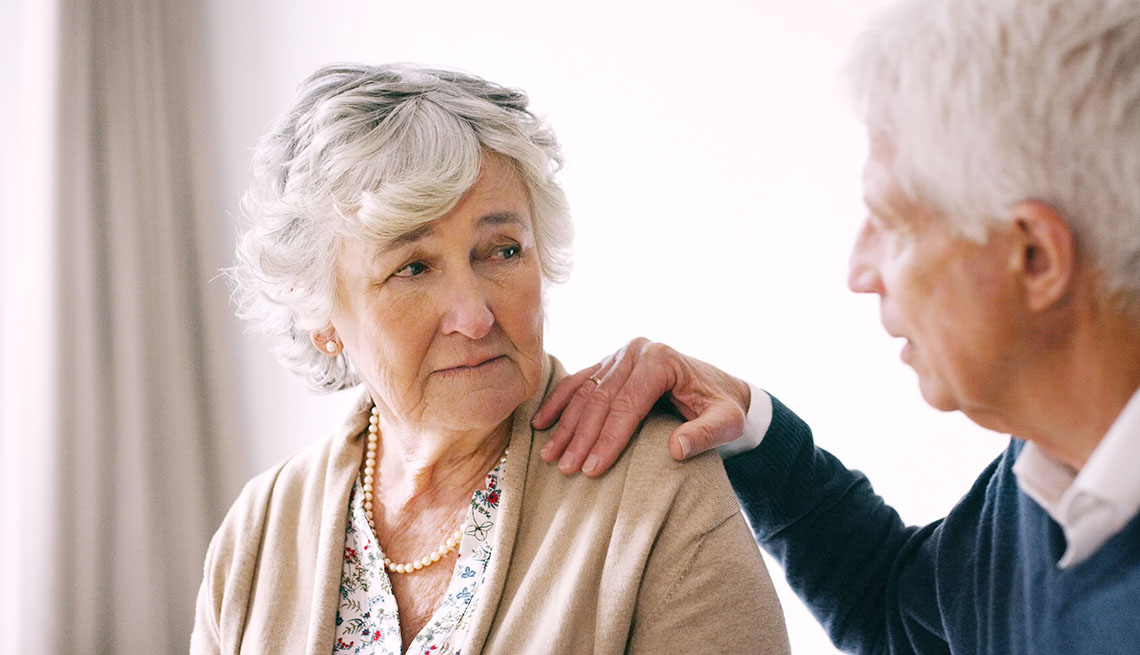
When the Grieving Process Gets Stalled
- Select a language for the TTS:
- UK English Female
- UK English Male
- US English Female
- US English Male
- Australian Female
- Australian Male
- Language selected: (auto detect) - EN
Play all audios:
By
Sharon Jayson,
AARP En español Published June 17, 2022It never occurred to Carolyn Hori that her mother’s death would throw her life into a tailspin.
“I went to the doctor because I was extremely tired. I thought maybe I had anemia,” she says. “I thought I was very healthy. I was one of those hard-driving, Type A career people. I had
expected myself to bounce back.”
Hori’s doctor prescribed grief counseling, telling her “You’re a functioning grieving person.”
Carolyn Hori (second from right) with (l-r) father Kaz Hori, sister-in-law, Maria Alzona,brother David and mother, Emily Hori. Courtesy Carolyn Hori
The business coach from Marina del Rey, California, had already experienced the death of a parent. Her father had died of a stroke six years before her mother. But this time, her grief
symptoms became physical. Hori, 51, found a support group and paid for private counseling.
Experts say a major path toward healing is sharing emotions and speaking about the loved one. Whether it’s informal support from friends or family or a more structured form through a mental
health professional, having support helps navigate bereavement. Grief is expressed in a variety of ways. It’s not just crying or feeling intense sadness, loneliness or anger. It can disrupt
clear thinking, appetite, sleep and energy levels, causing physical symptoms, including exhaustion. The unprecedented number of pandemic-related deaths, as well as a newly adopted mental
health diagnosis, mean that grief is impacting far greater numbers and likely for longer periods, thereby creating a more complex portrait of this universal truth.
“There is no one right way to do grief and no one model for grief,” says David Kessler, a grief expert in Los Angeles, who worked with psychiatrist Elisabeth Kübler-Ross. In her 1969 book On
Death and Dying, she identified five stages of grief — denial, anger, bargaining, depression and acceptance.
Barriers to getting helpSeeking outside help for grief can vary, from online individual or group support to in-person individual or group counseling. It can be free or cost hundreds of dollars per hour. People
might pay per session, or for a group of sessions or as a drop-in. Some organizations focused on grief have therapist-led support; other agencies that offer free services have trained
volunteers or peer support.
“Cost is a huge barrier to getting support,” says Doran Oatman, a psychotherapist in Austin, Texas who specializes in grief counseling. “More and more psychotherapists are not choosing to
accept insurance for a variety of reasons. It could be upwards of a thousand dollars every couple of weeks. Another thing is those that do accept insurance are often completely full and have
long wait lists.”
But “not everybody needs clinical support for grief,” says Annette Juba, a clinical social worker at AGE of Central Texas.
“I do think everybody needs some sort of support,” she says. “The real danger in grief is when it happens in a complete vacuum and there’s not any external support.”